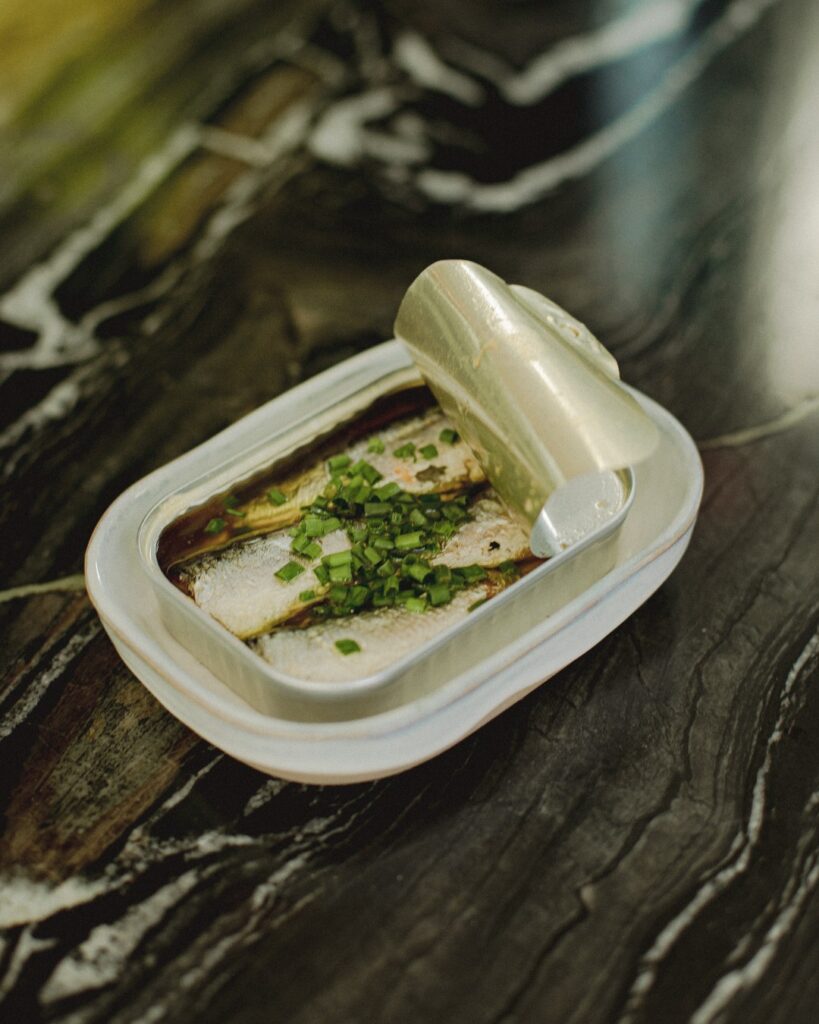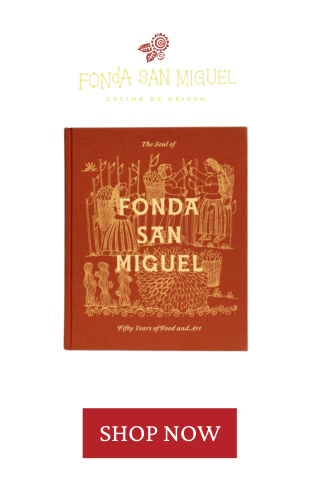Is Tinned Fish the Austin Food Trend of the Summer?
Austin chef weighs in on popularity of this trending food with tips on buying, serving, and pairing drinks

If you’ve spent any time on foodie TikTok or Instagram feeds lately, you’re probably well aware that tinned fish is having a major moment right now. These funky and fragrant bites can be found at bars and restaurants all over the country, and Austin certainly isn’t shying away from this trend. That’s why Las Bis, the stylish new rooftop bar at the Hyatt Centric hotel in Downtown Austin, chose to center their entire food menu around tinned fish from the Mediterranean region. We caught up with executive chef Steve McHugh — a devoted champion of this sometimes controversial food item — to find out why tinned fish is so popular right now, what to look for when shopping for these treats, and how to put together a preserved pescatarian feast this summer.

Look for tinned fish from Spain and Portugal.
When chefs and restaurateurs talk about “tinned fish” these days, they’re not referring to generic, mass-produced versions. In fact, McHugh thinks that the public at large has a lot of misunderstandings about these preserved food items because of the “gross, smelly, cheap” reputation that mass-produced canned and tinned fish developed during the twentieth century (as an example, he mentions the old Bugs Bunny cartoons where cans of fish would be labeled with skulls and crossbones and the pungent fumes would knock Bugs and his friends out).
Instead, McHugh wants anyone who might be curious about the rising tinned fish trend to seek out quality versions from countries that know exactly how to do it right. In Spain and Portugal, tinned fish is known as “conservas”, and it consists of fish that are canned at peak freshness using techniques that have been part of Mediterranean food culture for centuries.
McHugh says that traveling through Spain gave him an appreciation for tinned fish that he never had before: “When I went to Spain, I realized how prevalent and ‘normal’ were. What really blew my mind was when I went to a bar in Barcelona that only served tinned fish, and it turned out to be so good that we canceled our dinner plans the next night and went back to that same bar.” If you’re looking for a solid place to begin your tinned fish journey, focus on versions that are made in these countries with a rich conservas tradition.
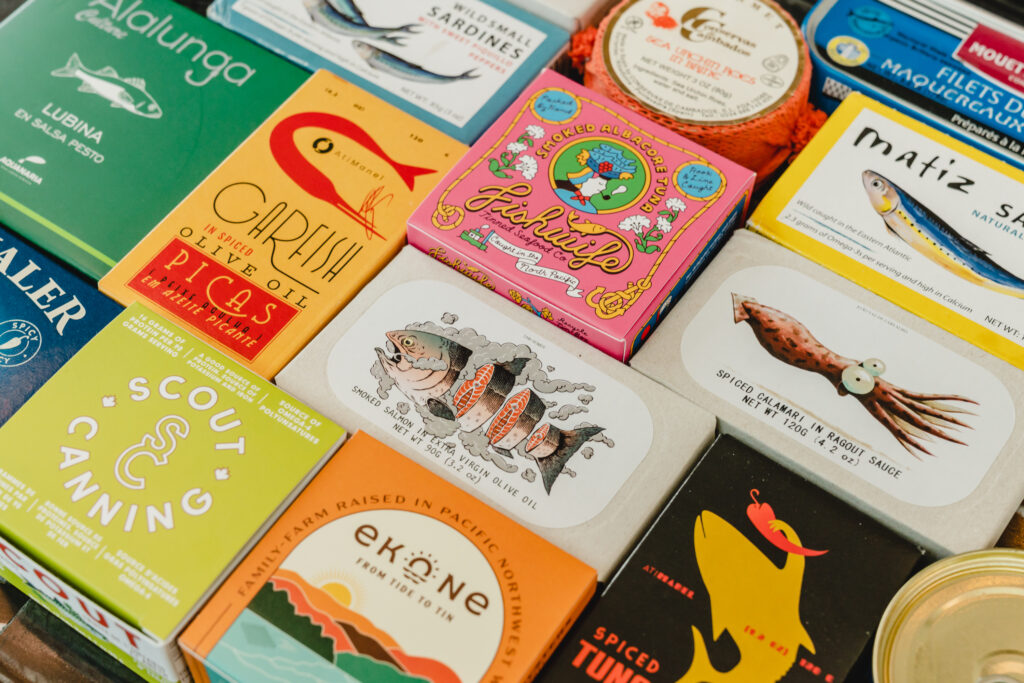
Try to shop for sustainable tinned fish.
At Las Bis, McHugh tries to use sustainably-produced tinned fish whenever possible. Not only are these versions better for the environment, but because they don’t tend to include unnecessary additives or synthetic ingredients, they feature a higher quality of flavor. “A Marine Stewardship Council (MSC) blue fish label lets you know if the fish you are consuming has been sourced from an MSC-certified sustainable fishery,” he advises.
Oil-packed fish will be more flavorful than water-packed fish.
Tinned fish is typically preserved in one of two liquids: water or oil. McHugh believes that olive oil “is a better preservation method” than water because it provides “better flavor and better texture.” Because olive oil both has its own natural flavor and can easily absorb and incorporate flavors from other food items, McHugh especially likes it for fish tins that contain chilis, citrus peels, herbs, and other aromatic ingredients. That said, McHugh does encourage tasting both oil-packed and water-packed fish to figure out which versions suit your own palate.
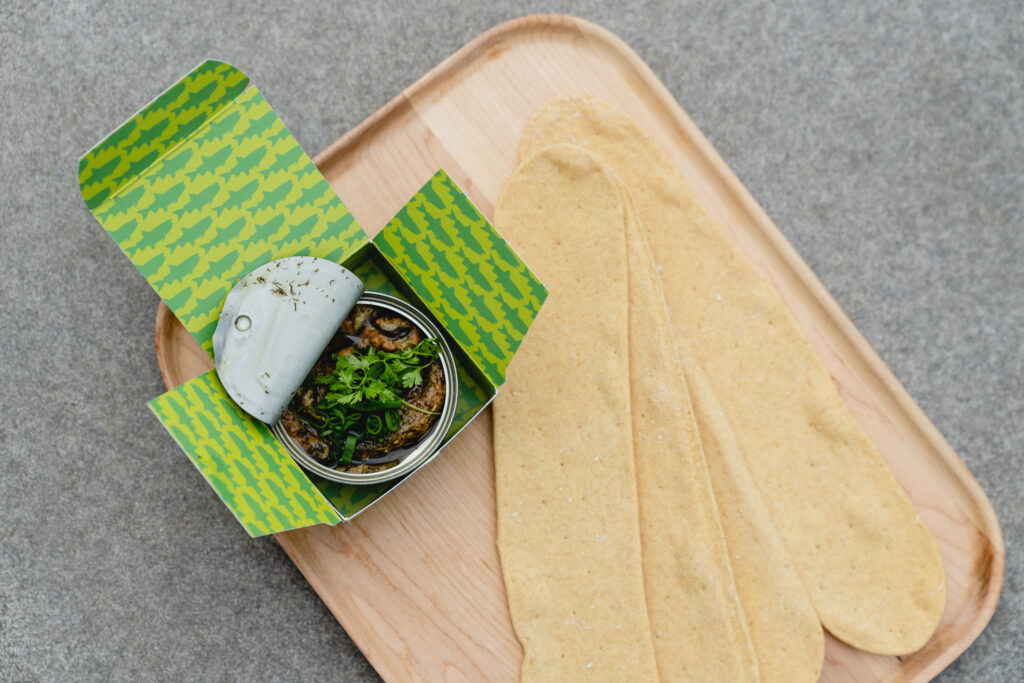
Serve tinned fish like you would serve charcuterie.
Preserved fish is famous for its assertive flavors and perceived “funkiness”, which likely contributes to its current trendiness. (We love “funk” in 2023, whether it’s in natural wine or fermented mushrooms or aged cheese or conservas!) McHugh urges tinned fish newbies to “keep an open mind. Don’t be afraid to explore when selecting your fish.” If the funk is a bit too in-your-face for you, McHugh has an easy shortcut for reducing that potency: “You can add a squeeze of lemon to help get more of a mild profile, if that’s what you’re looking for.”
But how should you serve these bold-tasting little swimmers? McHugh recommends approaching tinned fish much as you would approach a charcuterie board. “I like a wide variety of different fish and different packing methods building a ‘fish board’ at home. Add some funky things like anchovies or habanero-smoked oysters, try some lemony , include acidic components like caper berries or cornichons. Spanish-style sauces like bravas sauce or romesco can work really well, especially with fatty fish,” he says.
Also, be sure to get “the good crackers.” McHugh defines these as crackers that are lightly salted and fairly neutral, as you “don’t want to take away from the fish.”
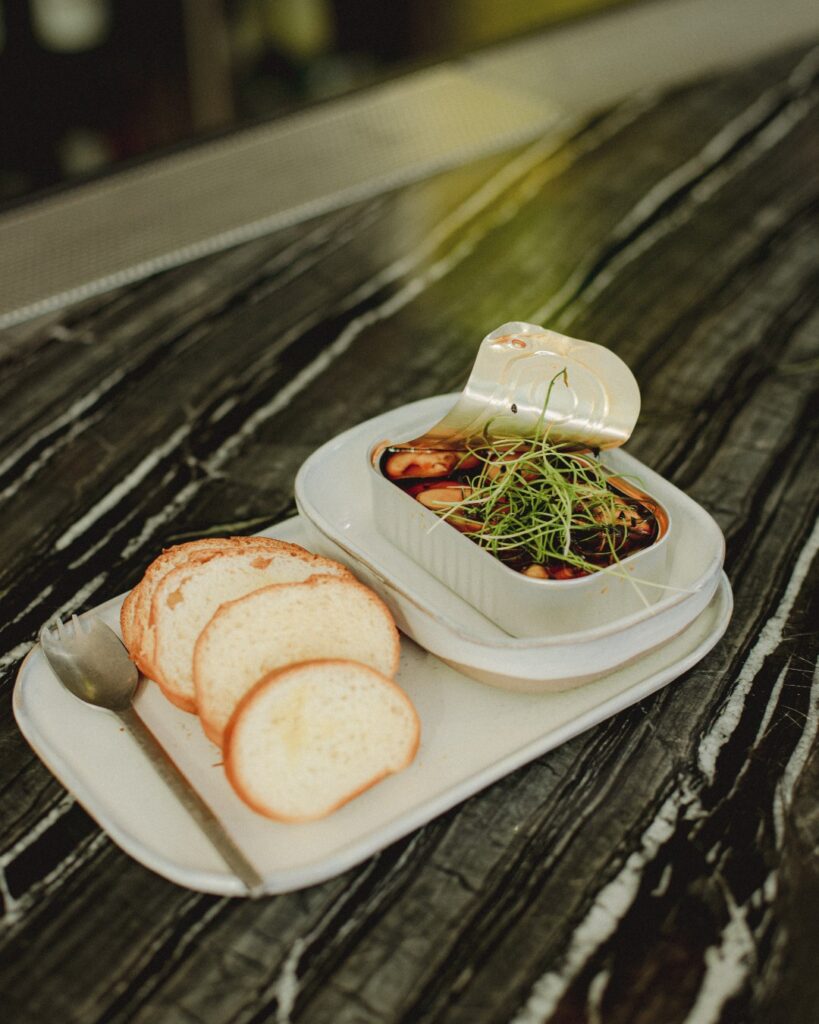
When it comes to beverage pairings, go with Mediterranean wine or a classic gin & tonic.
Las Bis provides a well-curated menu of wines, beers, and cocktails designed to pair well with conservas. If you’re serving tinned fish at home, though, McHugh suggests seeking out wines that are “lighter, leaner, and responsibly raised.” Natural wines are an intriguing pairing for tinned fish because they often feature “a bit of funk and a little more acid.” But McHugh’s particular favorite wine for tinned fish is vinho verde, a category of wines from Northern Portugal well known for their bright acidity, hints of natural carbonation, and relatively low ABV. “Vinho verde is amazing because it cleanses your palate and makes you want to just keep going back for that fish,” he explains.
As far as cocktails go, McHugh gives an enthusiastic shoutout to the classic gin & tonic. He thinks that the herbacousness of gin complements the fatty, salty, and funky elements of tinned fish, and if you add a sprig of rosemary to that G&T, the result is “just perfect”.
